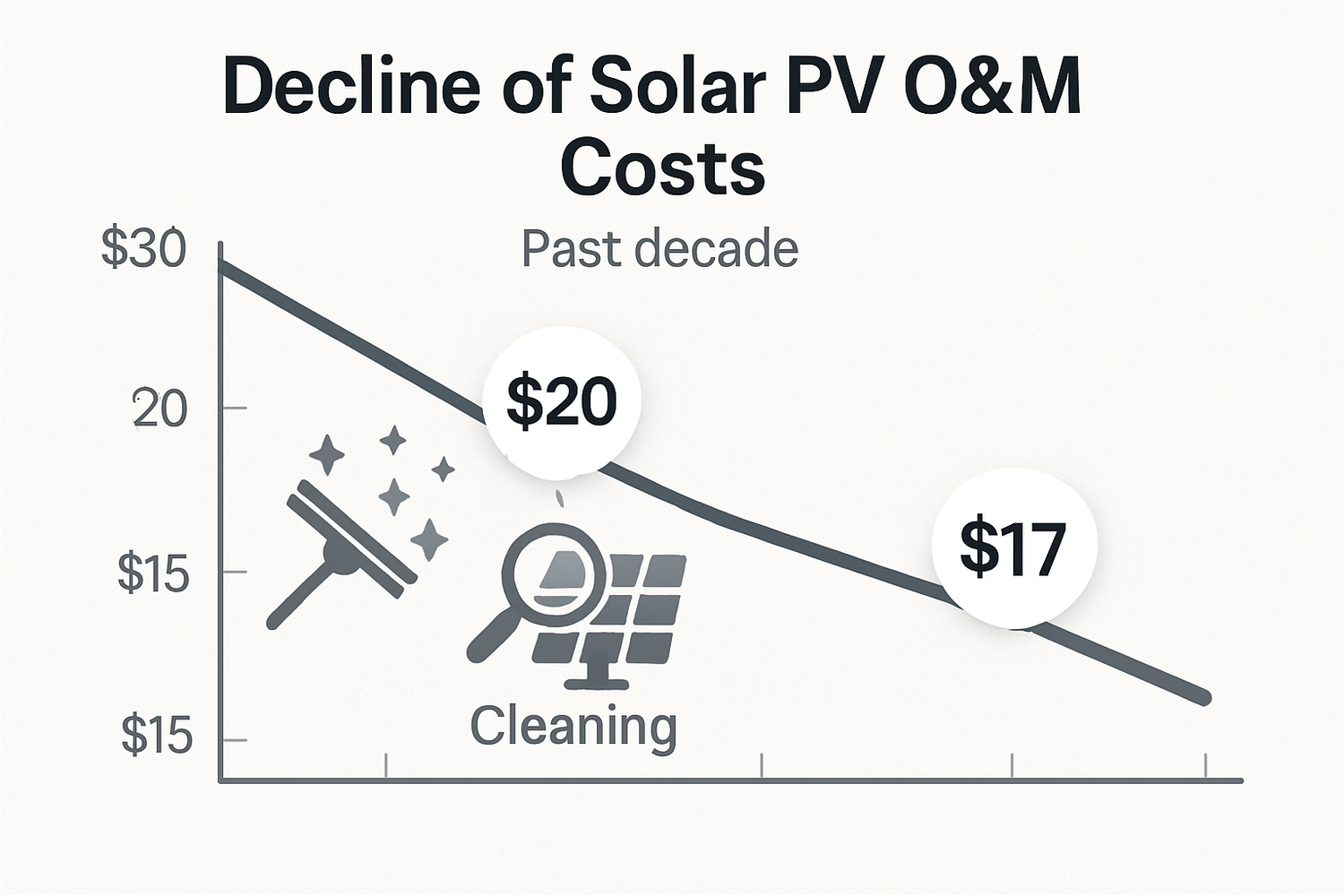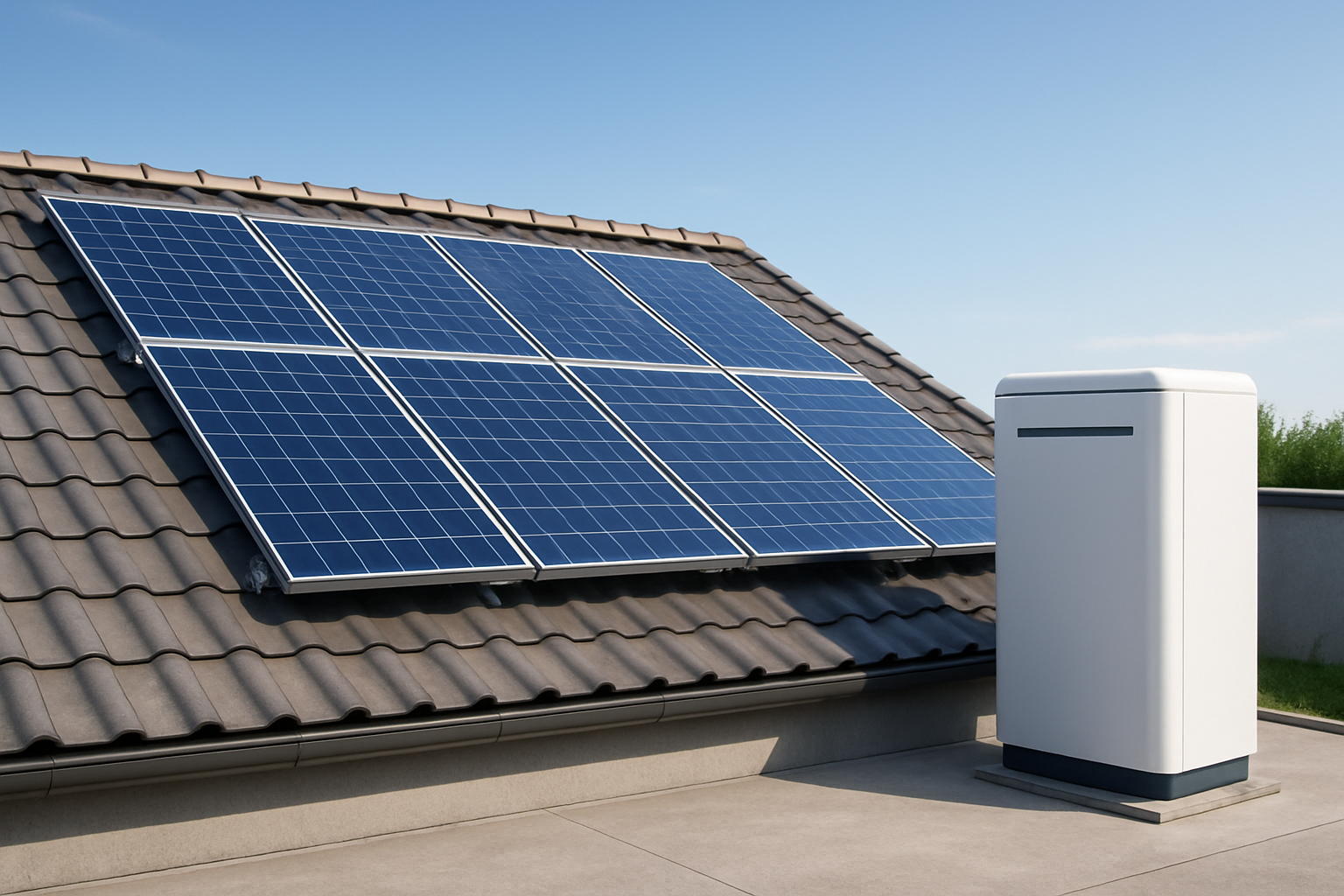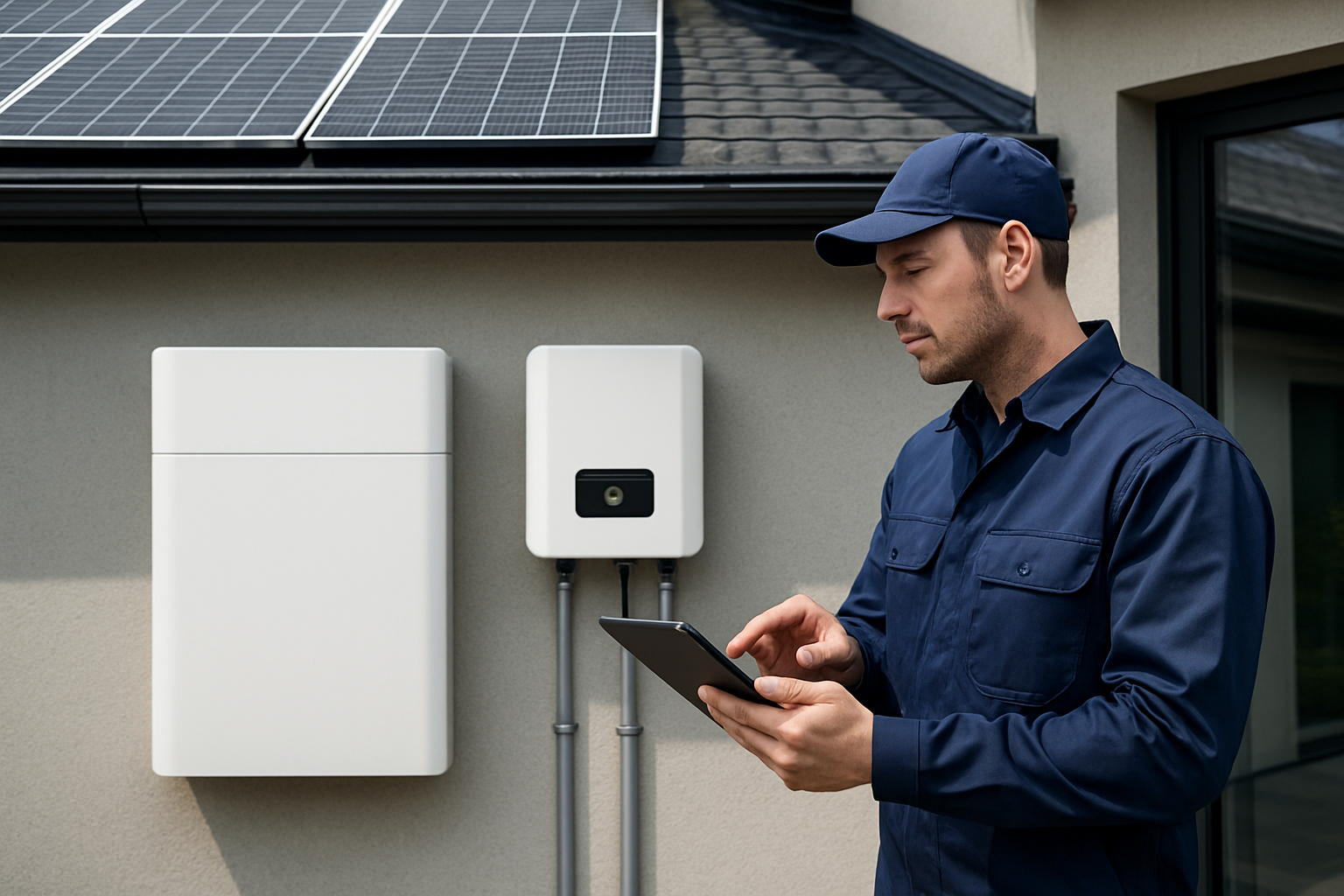Installing a solar PV system is a major step toward energy independence. You focus on panels, inverters, and perhaps batteries. But what happens after the installation? The long-term health and efficiency of your system depend on Operations and Maintenance (O&M). Understanding these ongoing costs is vital for calculating the true return on your investment.
Leading global authorities like the International Energy Agency (IEA) and the International Renewable Energy Agency (IRENA) track these costs closely. Their data reveals important trends about photovoltaic operations and maintenance costs. This report breaks down their findings, highlights key trends, and illuminates the hidden expenses you should anticipate.
What Are PV Operations & Maintenance (O&M) Costs?
O&M encompasses all the activities needed to keep your solar installation running efficiently and safely throughout its lifespan. Think of it as the routine check-up for your energy system. These tasks prevent small issues from becoming costly failures.
The Core Components of O&M
PV O&M is typically divided into two categories:
- Preventive Maintenance: These are scheduled activities designed to prevent failures. This includes regular inspections of wiring, cleaning of solar panels to remove dirt and debris, and software checks for monitoring systems.
- Corrective Maintenance: This is the response to an unexpected issue. It involves troubleshooting a fault, repairing or replacing a component, and bringing the system back online. A solid preventive plan drastically reduces the need for corrective action.
Why O&M is Crucial for System Performance
Proper maintenance directly impacts your system's output and your savings. A clean, well-maintained system generates more electricity. According to research from the U.S. Department of Energy, neglecting panel cleaning can lead to significant energy losses, especially in dusty or polluted areas. Regular O&M ensures maximum power production, upholds safety standards, and helps your equipment last longer, protecting your investment.
Analyzing the Data: A Look at Global O&M Cost Trends
The good news from both the IEA and IRENA is that the cost of maintaining solar PV systems has been steadily decreasing. This trend makes solar energy an even more attractive financial proposition.

The Downward Trend in O&M Costs
Over the last ten years, photovoltaic operations and maintenance costs have fallen significantly. A report from the International Renewable Energy Agency highlights that these reductions are driven by several factors. As the industry has matured, so have the practices for managing solar assets. Advanced remote monitoring technologies, improved component reliability, and more experienced technicians all contribute to lower costs.
This decline is evident across different system sizes. The table below shows a representative trend for utility-scale projects, and similar principles apply to residential systems, where improved technology makes maintenance simpler and less frequent.
| Year | Average O&M Cost (Utility-Scale, USD/kW/year) | Key Drivers |
|---|---|---|
| 2012 | $30 - $40 | Early-stage technology, manual inspections |
| 2017 | $15 - $25 | Improved monitoring, growing expertise |
| 2023 | $8 - $15 | Advanced analytics, automation, economies of scale |
Regional Variations and Their Causes
While the global trend is downward, O&M costs can vary by location. The IEA Photovoltaic Power Systems Programme notes that factors like local labor rates and climate play a significant role. For instance, systems in desert regions may require more frequent panel cleaning due to dust accumulation, while those in snowy climates might need snow removal to maintain production during winter months. Local regulations and grid connection standards can also influence maintenance complexity and cost.
Beyond the Standard: Uncovering Hidden Maintenance Expenses
Standard O&M budgets cover routine tasks, but owners should also plan for less frequent, yet significant, hidden expenses. These capital expenditures are a critical part of the total cost of ownership.
Inverter Replacement: The Most Common Major Expense
Your solar panels are built to last, often with warranties of 25 years or more. However, the solar inverter—the device that converts DC electricity from the panels to AC for your home—typically has a shorter lifespan of 10 to 15 years. This means you will likely need to replace your inverter at least once during the lifetime of your solar panels. Factoring this future replacement cost into your financial planning is crucial. Opting for a high-quality, durable solar inverter from the start can extend its operational life and reduce the likelihood of premature failure.
Battery Degradation and Replacement in Storage Systems
For those achieving true energy independence with an energy storage system (ESS), the battery is a central component. Like all batteries, the ones in your storage system will degrade over time, holding less charge with each cycle. The lifespan of a battery depends heavily on its chemistry, usage patterns, and operating temperature.
Advanced battery technologies like Lithium Iron Phosphate (LiFePO4) offer a distinct advantage. They are known for their long cycle life, thermal stability, and enhanced safety profile compared to other lithium-ion chemistries. A high-performance LiFePO4 battery can endure thousands of charge-discharge cycles, providing reliable storage for many years and delaying the significant cost of replacement.
The Cost of Neglect: Performance Loss and Corrective Repairs
Skipping preventive maintenance might seem like a way to save money in the short term, but it often leads to higher costs down the road. Uncleaned panels can lose 5% to 20% of their efficiency. An undetected loose wire can become a safety hazard. A small component failure that goes unnoticed can cascade, causing damage to more expensive parts of the system. The cost of emergency corrective repairs and the value of lost energy production almost always outweigh the price of a simple, scheduled check-up.
Proactive Strategies for Cost-Effective PV Maintenance
You can take control of your long-term O&M costs by adopting a proactive approach and making smart technology choices.
The Power of Remote Monitoring
Modern solar and storage systems offer sophisticated remote monitoring capabilities. These platforms track your system's performance in real time, sending alerts if production drops or an error is detected. This allows you or your installer to identify and diagnose problems instantly without a site visit. Many modern residential energy storage systems integrate these tools, providing a complete overview of your energy generation, storage, and consumption on a single app.
Choosing Reliable and Serviceable Components
The quality of your initial equipment is the foundation for low long-term costs. Investing in reliable components from established manufacturers pays dividends. High-efficiency panels, durable inverters, and long-lasting LiFePO4 batteries create a robust system that requires less intervention. When selecting an off-grid solar solution or a home energy storage system, look for integrated designs where all components are optimized to work together seamlessly. This reduces potential points of failure.
Developing a Practical Maintenance Schedule
For most homeowners, a complicated maintenance plan is unnecessary. A simple, practical schedule is highly effective:
- Monthly Check: Review your monitoring app to ensure the system is performing as expected. Check for any alerts or warnings.
- Annual Inspection: Once a year, perform a visual check of your panels for any damage, and inspect wiring to ensure it is secure. Check that the area around your inverter is clear and well-ventilated.
- As-Needed Cleaning: Visibly dirty panels should be cleaned. The frequency depends entirely on your local environment—it could be once a year or every few months.
Securing Your Solar Investment for the Long Term
The data from IEA and IRENA confirms that photovoltaic operations and maintenance costs are both manageable and decreasing. By understanding the full picture, including predictable tasks and larger, hidden expenses like inverter and battery replacement, you can plan effectively.
Ultimately, a well-maintained solar PV system is a reliable and powerful asset. Making smart choices in technology, such as robust LiFePO4 batteries and dependable inverters, and staying engaged through simple monitoring, ensures your system will deliver clean, affordable power for decades. This approach empowers you to achieve genuine energy independence with confidence and peace of mind.





Leave a comment
All comments are moderated before being published.
This site is protected by hCaptcha and the hCaptcha Privacy Policy and Terms of Service apply.